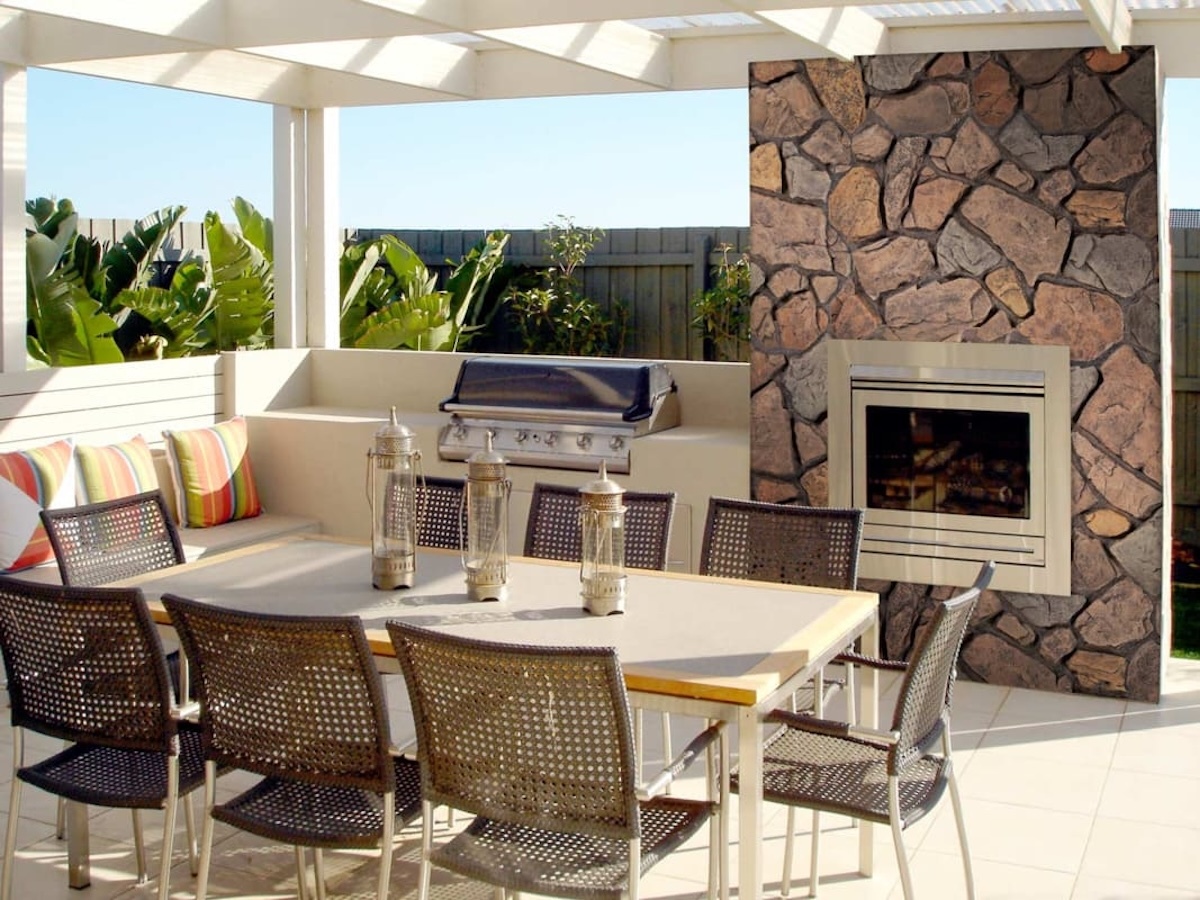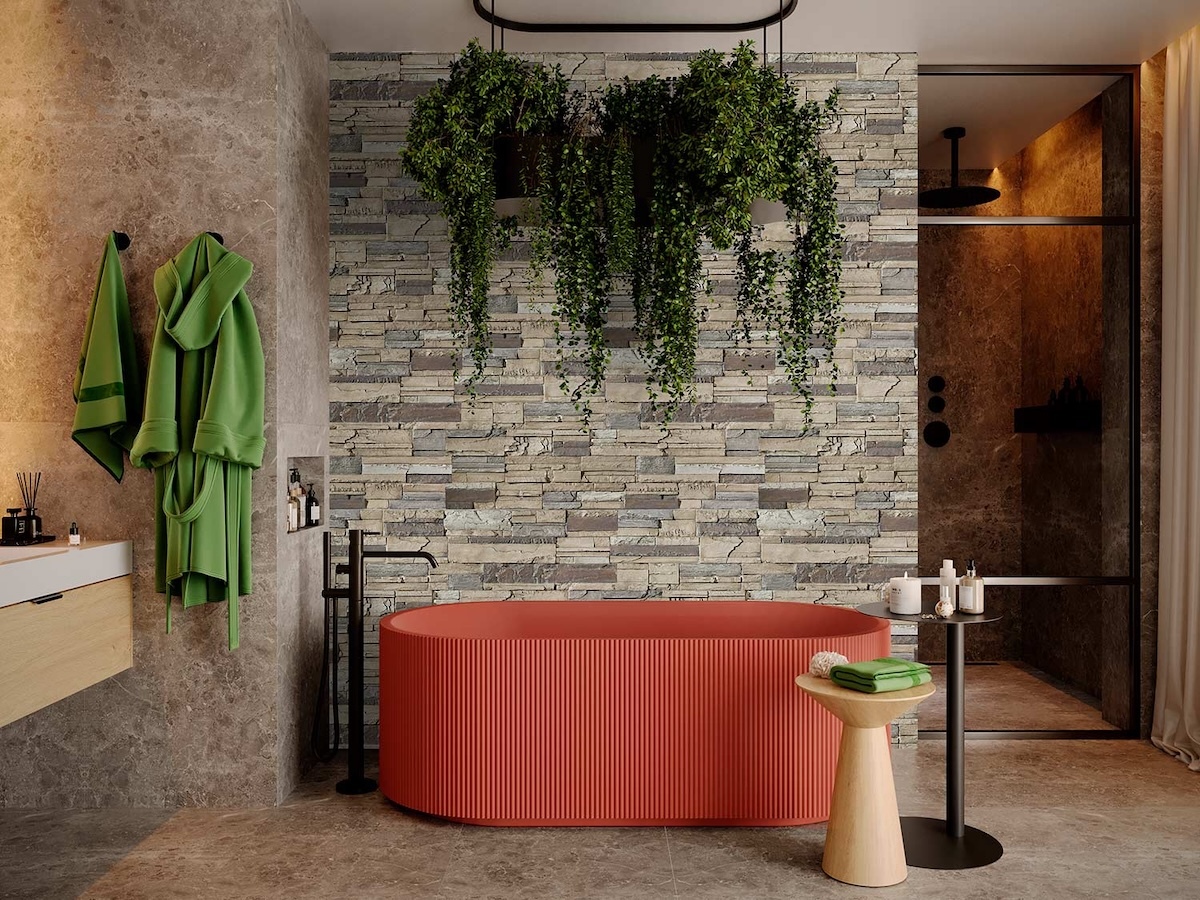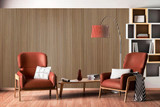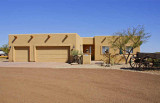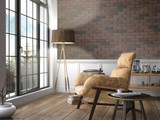
Are you ready to compare faux stone vs real stone for your wall project? There are three different options you’ll be choosing from: Real stone, real or faux stone veneer, or the handcrafted faux stone panels that you can get from Barron Designs.
When choosing between real stone, stone veneer, and faux stone panels for your wall project, it's essential to understand the distinct characteristics, advantages, and limitations of each option, as there are key differences in cost, performance, and installation ease. This comprehensive guide will help you make an informed decision tailored to your project's specific needs.
Real Stone: Authenticity That Comes At a Price
Anson Fieldstone Faux Stone Panels in Earth
Real stone is usually one of the first options that homeowners consider. This is a high-end option that is ideal for luxury builds or historical renovations. But for everyone else, the high cost and professional, labor-intensive installation demands mean that real stone is best suited for smaller exterior applications or areas like fireplaces, so that you can keep costs down and not have to deal with extensive engineering to support the weight of stone.
Pros of Real Stone
- Since it’s the real thing, there’s no question that you’ll get an authentic look.
- Real stone is extremely durable against weather, fire, and pest damage.
- With the right maintenance, real stone can last a lifetime.
Cons of Real Stone
- The price of real stone can be significant, making it inaccessible for many.
- Real stone often requires structural reinforcement and special equipment when you install it as siding or wall facings.
- In addition to requiring structural reinforcement, you —or your masonry contractor— will also need to worry about cutting, fitting, and mortaring stones, making installation a very labor-intensive and costly process.
Stone Veneer: A Natural Look With Less Weight

Evolve Stone Stone Veneer Siding in Kodiak Mine
Stone veneer is typically made with either thin slices of stone or dyed cement and aggregates shaped to look like stone panels. This reduces weight, making it more accessible than full-thickness stone, but still not ideal for DIY projects. This weight reduction also makes it more affordable and manageable since veneer costs less than regular stone and requires less structural support.
While it can be used in both exterior and interior applications, it is relatively fragile since thin stone or cement tends to be brittle. It’s a good choice for low-impact interior accent walls or protected exterior walls where it’s less likely to crack or chip due to things like hailstones, temperature expansion and contraction, or the home settling with time.
Pros of Stone Veneer:
- Because it’s made of thin slices of stone or thin cement, stone veneers are lighter than real stone.
- You may not need extra structural reinforcement to support the weight of stone veneer.
- It’s a bit easier to use stone veneer for a wider variety of applications, like interior accent walls or fireplaces.
Cons of Stone Veneer:
- It’s less expensive than real stone but still more costly than high-quality faux stone panels.
- Stone veneer tends to be fragile, too. It cracks and chips easily while being transported, and it can even crack if your home shifts subtly after installation.
- Though stone veneer is easier to install than regular stones, you’ll typically still need a professional mason. And while you may not need extensive structural reinforcement, you’ll likely still need to make sure to install sturdy backing to support the veneer. Similar to regular stones, you can still expect proper substrate prep, mortar, and specialized tools.
Faux Stone Panels: Realistic Stone Look Plus Lower Costs & Easy Installation
Kentucky Dry Stack Faux Stone Wall Panel in Mist
Faux stone panels from Barron Designs are made from lightweight, high-density polyurethane. These hyper-realistic panels are handcrafted in America from molds taken from real stone, then hand-painted for an authentic finish—ideal for both interior and exterior walls. They’re the best choice for DIYers or homeowners who want the look and feel of real stone without the expense or the difficulties in installation.
Better yet, because of their lighter weight and installation ease, faux stone panels are uniquely suited for ceiling applications. Real stone and stone veneer ceiling applications open up a bevy of safety and logistical risks and challenges.
Pros of Faux Stone Panels
- Faux stone panels are significantly more affordable than both real stone and stone veneer, while still giving you access to a great selection of hyper-realistic colors, textures, and shapes.
- Faux stone panels from Barron Designs are lightweight and easy to install without mortar or special tools. For interior faux stone panel installations, you can often fasten our interlocking panels directly to existing walls without worrying about adding additional structural support. Exterior faux stone panel installations require you to ensure that the home has solid sheathing underneath so that you can fasten both a drainage mat and the faux stone panels to the sheathing.
- Because they’re made from high-quality polyurethane, Barron’s faux stone panels are extremely durable and resistant to fading, cracking, and moisture damage.
- Maintenance requirements are low, too. Since there is no mortar, you won’t have to worry about periodically fixing cracked or missing mortar in between stones, and these panels aren’t as brittle as stone veneer, which makes them more resistant to cracking in general.
- Faux stone panels are available for both indoor and outdoor use, allowing you to create interior accent walls, elevate the look of your siding, create skirting for your home, update interior and exterior columns, and more.
- Faux stone panels can be installed on ceilings.
Cons of Faux Stone Panels:
- Some traditionalists may still prefer real stone, but authentically molded faux stone products are nearly indistinguishable once installed.
- While many of our faux stone products can be used around fireplaces, you’ll need to keep safety in mind. Polyurethane products have similar burning characteristics to real wood and are considered combustible. Most of our products can be used around a fireplace as long as you follow the insert or stove manufacturer’s instructions for required clearances. Please visit our panel products around fireplaces guidance for full fire safety information.
- Faux stone panels can be used around a bathtub, but they should not be placed in a shower.
Final Thoughts: Faux Stone Is the Smart Choice for Most Projects
For the majority of projects—especially where budget, ease of install, and long-term performance matter—faux stone panels from Barron Designs are the clear winner. They deliver high-end looks, DIY-friendly simplicity, and durability you can count on, all without the cost and complexity of traditional masonry.
Ready to transform your walls and ceilings with beautiful, handcrafted stone looks? Browse our Faux Stone Panel Collection—and feel free to contact our expert team if you have any questions.
Shop Related Products